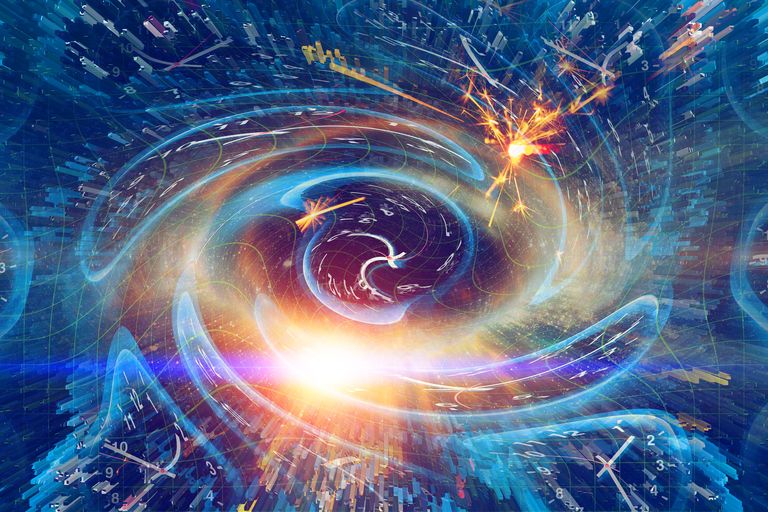In a recent study, physicists from the Universities of Bristol, Vienna, the Balearic Islands, and the Institute for Quantum Optics and Quantum Information (IQOQI-Vienna) demonstrated how quantum systems could evolve down two opposing time arrows – both forward and backward in time.
The research, published in the most recent issue of Communications Physics, reevaluates how the passage of time is understood and represented in circumstances where quantum laws are essential.
Philosophers and physicists have long held the belief that time can only move forward. We need to look at the second rule of thermodynamics to see why they thought so. According to this theory, the entropy of a closed system either stays the same or rises. If our universe is a closed-loop, entropy can never decrease, indicating that it can never return to a former condition. What if the arrow of time studied processes with small entropy shifts?
“The second law of thermodynamics is a statistical law…it is true on average in a macroscopic system. in a microscopic system, we may see the system naturally evolving toward situations of lower entropy,” says Giulia Rubino, a postdoctoral research fellow at the University of Bristol, and lead author of the study.
“Take the case of a gas in a vessel. Let’s suppose that at the beginning, the gas occupies only half of the vessel. Then imagine that we remove the valve that confined it within half of the vessel so that the gas is now free to expand throughout the vessel,” Rubino added.
The particles will freely travel across the vessel. As a result, the gas will soon fill the vessel completely.
“In principle, there is a non-zero probability that at some point the gas will naturally return to occupy half of the vessel; only this probability gets smaller the larger the number of particles that make up the gas get,” Rubino says. If there were only three gas particles instead of a humongous quantity of gas (comprising billions of particles), it would be possible that these few particles ended up sitting once again in the part of the vessel from where they originally started. “The second law of thermodynamics is a statistical law,” says Rubino. “It is true on average in a macroscopic system. In a microscopic system, we may see the system naturally evolving toward situations of lower entropy.”
Rubino and her colleagues considered the implications of using this method in quantum superposition. They looked at a quantum superposition with a state that changes both backwards and forward. The system was frequently travelling forward in time, according to measurements. On the other hand, Minor entropy increases can cause the system to move both forward and backward in time.
“We humans are macroscopic systems. We cannot perceive these quantum superpositions of temporal evolutions,” Rubino says. For us, time indeed moves forward. It might be the case that the world is slightly undecided, though. “At its most fundamental level, the world is made up of quantum systems [which can move forward and backwards],” Rubino explains. “Having a deeper understanding of how to describe time flow at the level of these elementary constituents could allow us to formulate more precise theories to describe them and, eventually, to gain a deeper understanding of the physical phenomena of the world which we inhabit.”
However, not everyone believes that the distinction between macroscopic and microscopic is evident. “Many-particle statistics are more accurate than single-particle statistics. Even a single particle has unique microstates,” says Ramakrishna Podila, an assistant professor in the Department of Physics and Astronomy at Clemson University, South Carolina.
“Associating the arrow of time with entropy or a quantum mechanical system collapsing (as it is stated in the paper) are not formal statements, but popular methods that are easy to use,” he says.
However, time flows forward is not an assumption but a hypothesis established by astrophysicist Arthur Eddington in 1927.
“That these ideas are used does not make them the truth. When we forget the real, underlying physics [the universally accepted axioms], we come up with all sorts of crazy things,” Podila says.
Therefore, contrary to what Captain James T. Kirk says at the beginning of every Star Trek episode, time may be the final frontier. Maybe, the idea that space and time blend into a single interconnected continuum is one of the possibilities. We no longer see space as a three-dimensional figure and time as a one-dimensional figure, thanks to Einstein’s theory of relativity.
“Time became the fourth element of a four-dimensional vector that describes space and time,” says Rubino.

